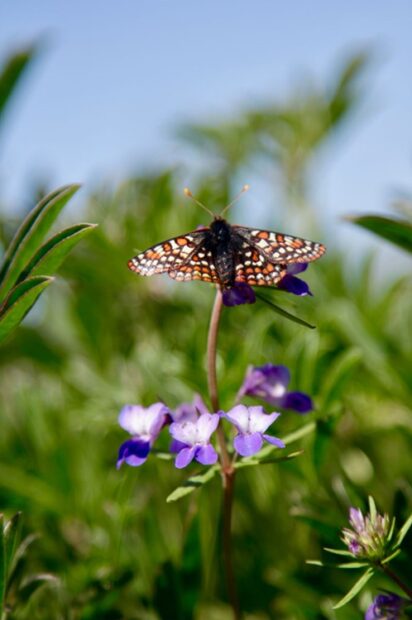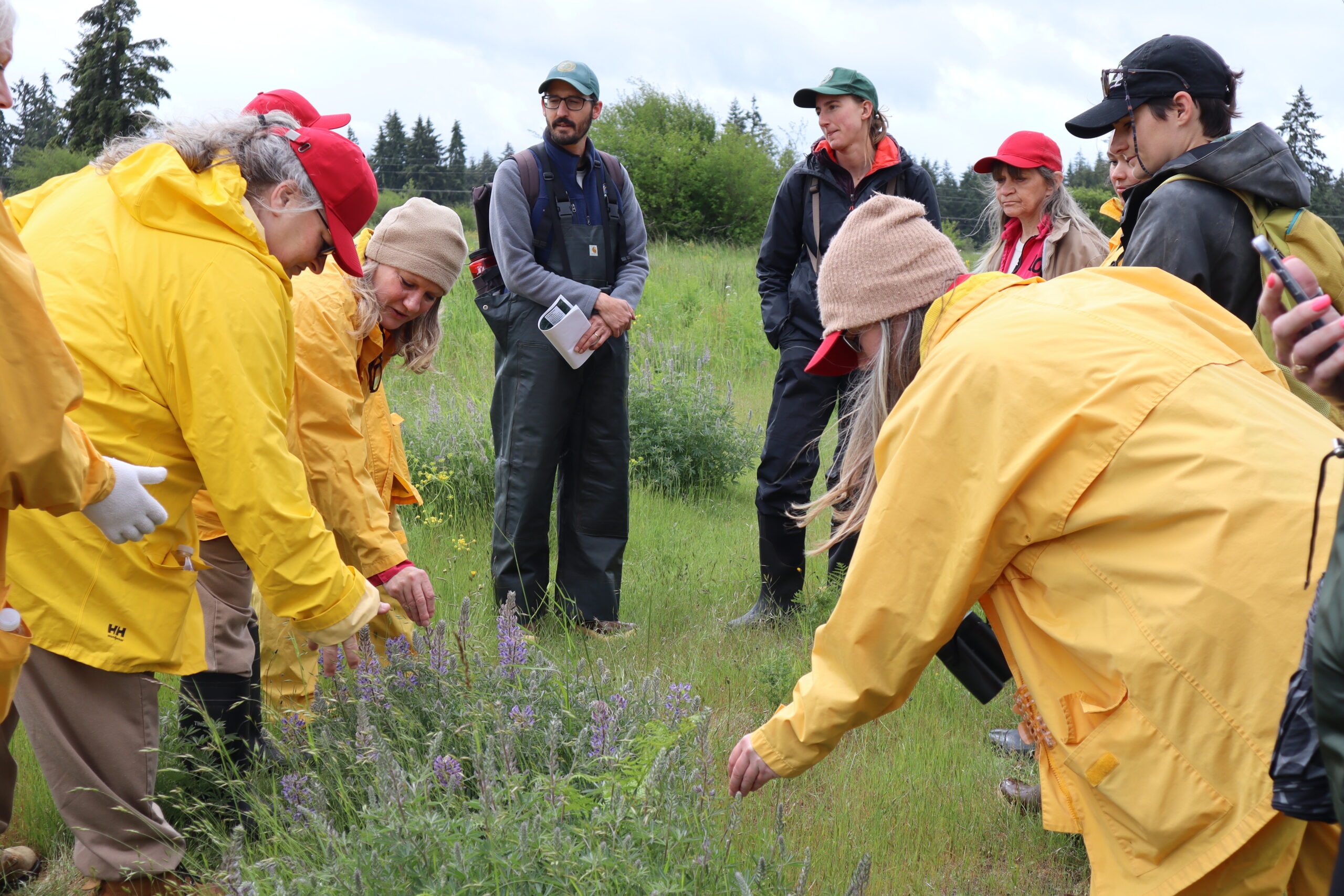Could you tell us a little bit about your background and what brought you to SPP?
I’ve been living in Walla Walla since 2007. My husband, who is from Seattle and is retired from the military, got a job at WSP, and we ended up moving to Walla Walla. I have my bachelor’s degree in animal welfare and science, but with my experience with dementia through my grandfather, I ended up working in a dementia care home. That experience made me consider nursing. I went through all the steps and was just about to apply and decided that no, I wanted to work with animals.
So, I opened my own small business working with animals and was doing a lot of farm work. Ultimately, the farm work got me involved with the vice president of the Washington State Sheep Association. We became friends and he said, “Gerry, they’re opening a sheep project at the prison, would you be interested?” I’d learnt to sheep shear through going round all these farms and shearing, so I said “Yeah, I’m interested.”
In 2017 they began the sheep program here at WSP, where participants could get 5 credits from Evergreen State College for completing the class. The incarcerated technicians were taking care of all the husbandry, and I oversaw them. I did that for four years and it was amazing.
I wanted to keep the land going when the program ended and got approval to do so, but I decided not to because it was going to be a lot of responsibility by myself. Then I heard from Kelli Bush (SPP Co-director) that they were going to be doing a sagebrush program at WSP, and I was offered a temporary position until they found a teacher.

Technician Marje McKenzie receives his certificate from Gerry Glenn at a Sagebrush program graduation ceremony. Photo by Emily Passarelli.
What has your experience with the Sagebrush program been so far?
With the sheep program I had been working with camp workers, which is minimum security outside of the prison on 40 acres of land with a guard. With the sagebrush program, it was a little daunting to work with medium security guys within the prison. I was nervous at first, but I settled down and immersed myself in the program.
The animal welfare side of it is to help with conservation of the sage grouse, because we are planting the sagebrush that they require as habitat. So, if someone said to me, “How do you save the sage grouse?” This is what I would say.
Kelli told me that there would be modules on education for the program. I remember asking Kelli if I could take the classes as well, and she said “no, you’re going to be teaching those classes.” I started doing my own research and everything. The first group was in 2023, and it was phenomenal. It was so great working with these guys and being with them 40 hours a week. You build up a different relationship than if you just come and go. You get to know more about them and the type of people they are.
The first class was successful. We sent out 16,000 plants that year. Then Carl Elliot (SPP Conservation Nursery Manager) asked if I would be interested in assisting with the Foundations in Gardening class, which I did. At this point I had been offered and accepted the permanent sagebrush teaching position; I was very happy. We did the next sagebrush class in 2024 followed by an advanced sagebrush class last, and now I’m doing my third class.
I’m much more confident now, and I know what I’m doing. We’ve got bigger expectations, we’ve got more space, we’ve got new hoop houses and it’s just fantastic what we’re doing. We have got 65,000 sagebrush plants growing right now. Before, I relied on the Sustainable Practices Lab staff to help me. Now they’re whittling down, and I have a lot more responsibility, and it’s great.
I love being positive around the guys, and I encourage them to get credits from The Evergreen State College. There’s a lot of pride in what we’re doing. There are some guys who were maybe a little bit lazier at the beginning, and bam, all of a sudden, they’re experts at talking about the sagebrush. Just to see that progression for me is fantastic.
I opened an animal business because I love animals, and it was the best job ever for me. Having my own business is amazing. To have a second job which is equally as amazing… I feel very blessed right now work wise.
Of course, you’ve got the SPP people, which is the other side. When I come over there and meet everybody, it’s fantastic. It’s so relaxed, but we all do our jobs and get it done, and it’s such a great atmosphere. I know I could call anyone on the team if I had an issue and it would be OK. So, you don’t often get these great opportunities. I know how lucky I am. Every day I come in and I think this is great, I think it’s rubbing off. People see how I love what I’m doing, and I can’t help it, I’m not even pretending!
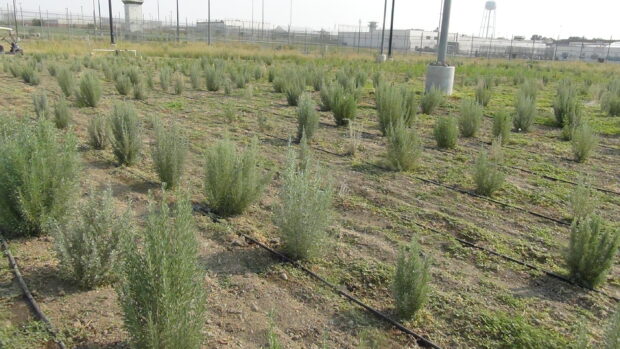
Sagebrush plants at WSP. Photo by SPP staff.
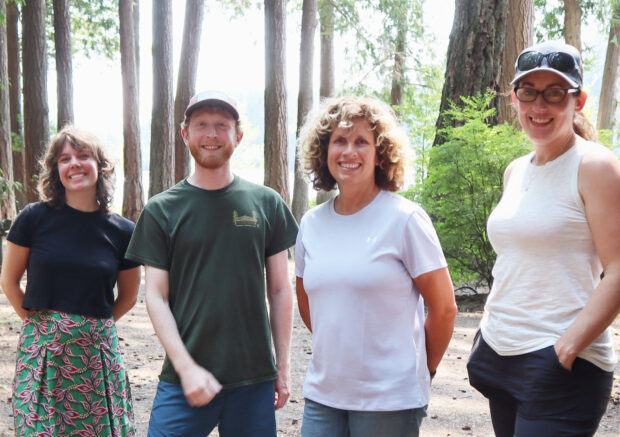
SPP staff members at Millersylvania State Park for a picnic. Left to right: Anneke Wilder, Nat Kelly, Gerry Glenn, and Sarah Larson. Photo by Emily Passarelli.
That’s great, and that’s why you got contractor of the year! Because everyone can see how much you enjoy your job, and that inspires people, I think.
I hope so! I hope that’s how I come across and not, oh, God, here she comes again, bubbling and yapping on about wonderful things.
I still know these are incarcerated individuals. When I talk to my friends on the outside and I say, “Look, I’ve got this great job, I still know that they’ve done the things that they’ve done to get here. But I don’t know what they’ve done, I don’t check their records. It’s not my business. It’s how they treat me and what they give me regarding work, you know, their skills. So that makes a difference. You’re not there to punish them. Imprisonment is punishment enough.”
We all work as a crew and so for me, contractor of the year means that I’ve got a great relationship with my crew. I’ve got a brilliant relationship with the staff who are working with me and that’s what makes me successful. If they didn’t care, then the project wouldn’t be successful. I won the award because I’m the face of the project, the teacher, but it wouldn’t work if I didn’t have everyone’s support around me.
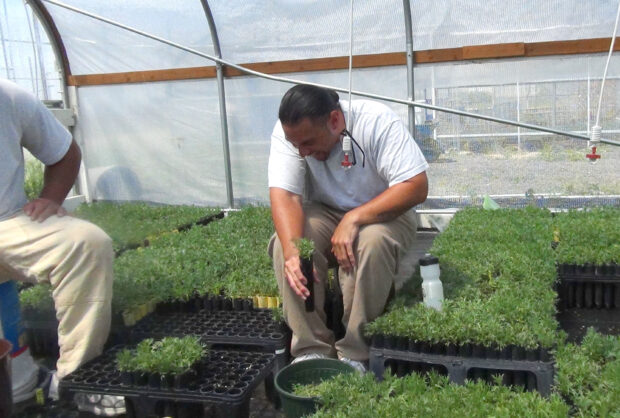
Eson Herr thinning sagebrush cones down to one plant. Photo by SPP Staff.
Can you tell me a little bit more about your day-to-day? What are some of the goals of the program as it relates to ecological goals specifically? Why is the sagebrush habitat so special?
Number one goal, restoration of the sagebrush steppe. We’ve got an issue now where the sagebrush steppe has become so fragmented due to wildfires, invasive plant species, anthropogenic development, livestock grazing to name a few reasons, that species of fauna that require this habitat to survive, are disappearing.
An example is the sage grouse, who are not officially classed as endangered, but should be. They are 100% sagebrush obligate, meaning they need it to survive. What we’re doing is replenishing the sagebrush.
We grow the sagebrush from seed in April and then when ready in October, we take it up to a Spokane reservation where Airway Heights, another prison facility in the Spokane area, have a crew that goes out with DNR to replant the sagebrush.
And yes, that’s great for the sagebrush and ecological goals of the program, but to me a big part of it is that the guys are taking responsibility for something and learning. There are so many issues facing restoration of the habitat, and they learn about that in class. We talk about other creatures that are becoming endangered – it’s not just big animals. It’s also reptiles and bugs and birds and other creatures that need this habitat. The insects and pollinators that come in, they feed on the sagebrush. They use it for protection. You know, they live in it.
And that’s the side that I really love. The education. I’m also learning different things myself, and we’re all learning together.
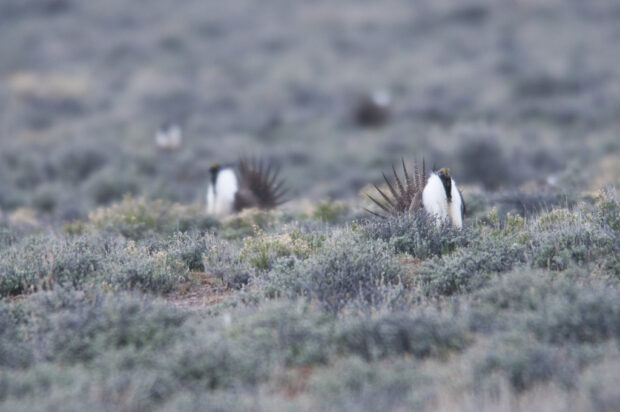
Photo of the endangered Sage Grouse on the sagebrush steppe. Photo by Bureau of Land Management Oregon.
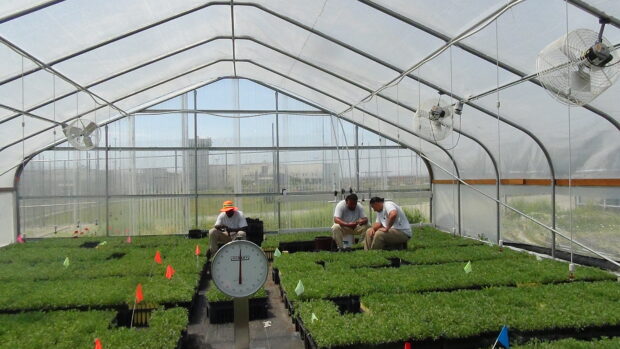
Incarcerated technicians thinning the sagebrush down to one plant per cone and removing any cones that are empty (luckily not many!). Photo by SPP Staff.
